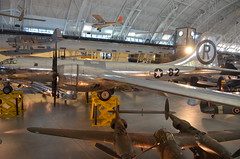How Many Hours Of Flying Training Does A Pilot Need?
The answer to that depends on the flying career you plan to pursue. Flying an aircraft is not like driving a car. Aside from the cost, flying requires a deal lot of examinations and clearances.
Here are the following pilot certificates and ratings needed before someone can operate an aircraft:
1. The Private Pilot Certificate
The first step to becoming an airline pilot is to get a Private Pilot License. This license allows the holder to fly an aircraft and to carry passengers but he or she may not be paid or be given compensation for it. Thus, those who want to fly for pleasure and not as a job only need license.
During the private pilot training you will need to learn about the basics of aviation like airplane types, takeoffs and landings, navigation, weather and basic instrument skills (where you learn how to fly an airplane based purely on the instruments and without looking at the horizon), theories and maneuvers. The trainee is required to complete about 50 hours of flight time which should include all dual, solo flights and some instrument flying.
2. The Instrument Rating
The instrument rating should be completed upon obtaining the private pilot license. The instrument rating or IR adds up an additional of at least 40-50 hours to your flight time.
3. The Commercial Pilot Certificate
You can move on to getting your Commercial Pilot License (CPL) after you have completed your instrument rating. You need the CPL if you plan to work as a commercial pilot. By commercial pilot we pertain to someone who is permitted to work as a commercial airline operator and gets paid. The commercial pilot certificate requires an average of 150-200 hours of total flight time, including those done during the night. Most people aiming for a higher ranking airline job also obtain their multi-engine rating by this time.
4. The Instructor Certificate
You can obtain this once you have a commercial pilot license. An instrument rating, and a multi-engine rating can also make you more employable but not necessary straight away. Most airline companies would be knocking at your door to hire you yet. Most Airline minimums are 1500 hours and a lot of specialized training and experiences. Build up your flight experience more by becoming a flight instructor or Charter Pilot. This way, you can increase your hours and still earn money.
Some regional airlines consider pilots with as little as 500-1000 flying hours. Flying for a cargo/freight operator isn’t a bad idea either. Cargo jobs can increase your hours by upto 500-1000 hours every year depending on their contracts. And you could always consider joining a flying club which could be a great and fun way to build up your time.
5. The Airline Transport Pilot certificate
An Airline Transport Pilot Certificate is the highest ranking certificate available for pilots and it is a requirement for one to become a captain on an aircraft within an airline. Minimums vary but major airlines typically require at least 3,000 hours total flight time including at least 1,500 hours multi-engine, and at least 1000 hours as pilot in command (PIC) of turbine (jet) powered aircraft. But this can be reduced depending upon supply and demand of pilots at the time.
www.HowToBeACommercialPilot.com
Pilot Training Australia – Pilot certificates and ratings are needed in order to operate an aircraft. Visit http://www.howtobeacommercialpilot.com and be knowledgeable on the requirements needed to become a pilot.




